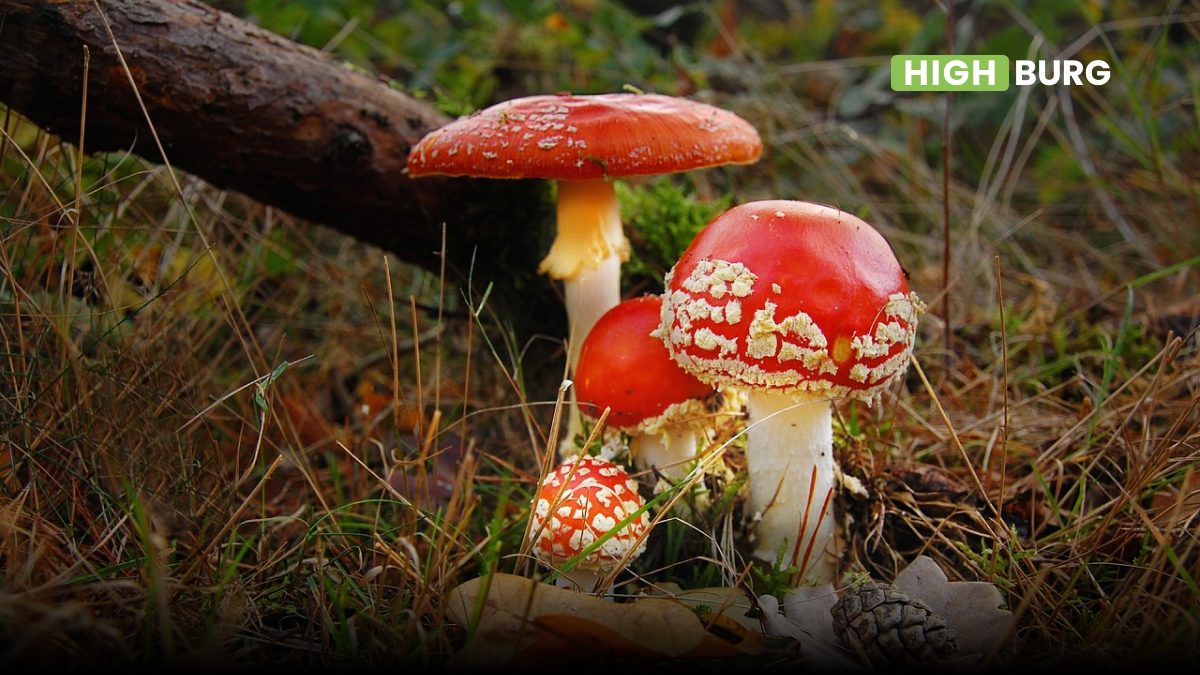Amanita muscaria is often referred to as the mushroom of the Siberian Shamans. Psychedelic mushrooms, with their potential for sparking profound experiences, have captivated human beings throughout history. Among these, Amanita muscaria, a symbol of Siberian shamanism, stands out. With its vibrant hue and mystical aura, this mushroom invites us to explore its intriguing secrets and the ancient traditions associated with it.
We are going to discuss the cultural and historical significance of Amanita muscaria, its surprising ties to our beloved Santa Claus and Christmas traditions, and its potential effects as a psychedelic substance. Whether you’re a seasoned mycophile or merely a curious reader, this exploration into Siberian shamans and their sacred mushrooms promises to be as entertaining as it is informative.
What is Amanita muscaria?
Amanita muscaria, commonly known as the fly agaric, is a mushroom species that commands attention due to its striking appearance. The mushroom’s bright red cap, adorned with white spots, has permeated human consciousness, making it a frequent feature in fairy tales illustrations and folklore across cultures.
This mushroom thrives in the temperate and boreal regions of the Northern Hemisphere. Its significance extends beyond its visual appeal, as it’s deeply ingrained in Siberian shamanism. Siberian shamans have historically consumed these mushrooms during religious rituals, viewing them as a spiritual conduit that enables communication with the spirit world. This practice underscores the cultural and spiritual importance of Amanita muscaria.
The relationship between Siberian Shamans and Amanita Muscaria is an intricate dance of respect, necessity, and spiritualism. The shamans see this mushroom as a sacred entity. It is often considered a gift from nature that opens the doors to other realms.
While in a trance, induced by the consumption of this mushroom, they believe to gain wisdom from ancestral spirits, seeking healing powers, and even predict the future. It’s a practice that has been passed down through generations, a testament to the enduring bond between man and nature, and the profound influence of this remarkable mushroom on Siberian shamanistic traditions.
How Amanita muscaria Is Related to Santa Claus and Christmas Trees?
The relationship between Amanita muscaria, Santa Claus, and Christmas trees is quite fascinating. Some anthropologists propose that several contemporary Christmas traditions may have originated from ancient Siberian shamanistic practices revolving around this particular psychedelic mushroom.
Shamans often acted like an ancient Santa Claus, collecting and delivering the mushrooms to local communities. Their traditional garments, predominantly red and white, are uncannily reminiscent of the colors of Amanita Muscaria. Even the custom of decorating Christmas trees with ornaments is thought to mirror the historical practice of drying these mushrooms on tree branches — an ingenious method of preservation and a beautiful spectacle in its own right.
This intriguing connection between Amanita muscaria and Christmas traditions was highlighted in an interview on NPR, where Harvard biologist Donald Pfister suggested a fascinating theory. He proposed that not only people, but also reindeer partook in the consumption of these psychedelic mushrooms. Pfister’s statement, “Reindeers flying — are they flying, or are your senses telling you they’re flying because you’re hallucinating?” adds another layer to our understanding of the mushroom’s influence. It suggests that the iconic image of Santa’s flying reindeer could be a metaphorical representation of the hallucinogenic experiences induced by Amanita Muscaria.
What are the Reported Effects of Amanita muscaria as a Psychedelic Substance?
When it comes to its properties as a psychedelic, Amanita muscaria can produce a wide spectrum of effects. Users frequently report experiencing shifts in perception, lucid hallucinations, and feelings of heightened clarity or enlightenment. However, these effects are not uniform. The effects of Amanita muscaria can differ significantly among individuals and are influenced by various factors such as dosage, preparation method, and individual physiology.
Unlike other psychedelic mushrooms that contain psilocybin, Amanita Muscaria contains two primary active compounds, ibotenic acid, muscarine and muscimol, which can induce a state of delirium. This distinction underlines the need for careful and informed consumption.
Despite its historical use in spiritual and shamanistic rituals, Amanita Muscaria remains a potent and unpredictable substance. If you’re drawn towards the world of psychedelic mushrooms, ensure you approach your journey with caution, respect, and a deep understanding of these powerful organisms’ potential effects.
